A stiff neck is usually not a serious medical condition, but it can interfere with your lifestyle in many ways. It is a physical condition that can make it painful to sit, work, enjoy recreational activities, perform daily activities and get a good night’s sleep. Making some changes to posture and avoiding behaviors that strain the neck are often enough to prevent a stiff neck.
Poor posture is a common cause of back and neck pain. Slouching or maintaining a curved spine places undue stress on the spine, the back’s supporting muscles and internal organs. Correcting poor posture begins with awareness and making an effort to sit, stand, walk and sleep with good posture. The goal is to make good posture a regular habit.
Effects of Bad Posture on the Body
It is common for people to sit with a curved spine, slump over a desk while trying to read documents or computer screens and walk with the head pushed forward or tilted while looking down. These are just some of the activities where bad posture is commonly found.

The spine is crucial to supporting the body, movement and nerve signaling. Consistently maintaining poor posture can lead to a host of medical problems far beyond back or neck pain:
- Back and neck pain – Supporting back and neck structures like muscles, tendons and ligaments are stressed and forced to move in unnatural ways.
- Nerve system disruption – The spine is the main nerve channel from which smaller nerves extend outward to serve the body. A misaligned spine disrupts nerve signaling, leading to symptoms like numbness and pain in various areas of the body.
- Uncontrollable movements – The nerve system disruption, combined with stressed muscles and other tissues, can cause uncontrollable shaking and movements in the legs, arms, hands, etc.
- Organ functioning disruption – Poor posture impairs the functioning of organs like the intestines and lungs, causing digestive and breathing problems.
- Joint problems – Over time, bad posture can negatively affect spine, knee, hip, ankle and feet joints because of the unnatural positioning and movement of the body due to bad posture. The misalignment of the knees and spine can contribute to the development of arthritis or make arthritis worse in different joints.
- Other problems – Bad posture can lead to poor balance, headaches, incontinence, blood circulation issues that can also contribute to vertebrae deterioration, chronic fatigue and more.
It is easy to minimize the impacts of bad posture because it is not a disease or medical condition, per se. The truth is poor posture disrupts much of the entire body’s functioning along with causing back and neck pain.
Focusing on Alignment of the Spine
The spine should be kept in alignment when doing common activities – walking, sitting, driving and sleeping. Poor posture includes features like:
- Rounded or slumped shoulders
- Rounded back
- Posterior pelvic tilt (sway back)
- Head jutting forward past the shoulders
- Head leaning backward
- Sitting in a slouched position with back at an angle and hips placed out
- Knees bent when walking or standing
- Sleeping with the neck out of alignment with the spine
- Anterior pelvic tilt (pelvis tilts forward)
- Pot belly
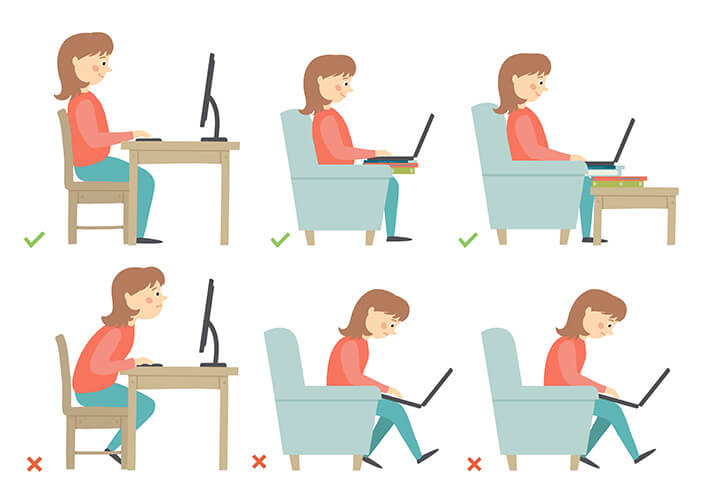
A simple test for checking for bad posture is to align spine at home, and note the results. Stand up and place the back of the head and the back against the wall. The buttocks and shoulder blades should be touching the wall. Measure the gap between the neck or the small of the back and the wall. Either gap should be less than two inches. More than two inches indicates the spine is curved.
How to Align Your Spine
Developing and maintaining good posture requires paying attention to how the head, shoulders, back and hips are held. The key is to maintain a neutral posture and not a stiff one, so it is important to know how to straighten your back.
- Stand up tall
- Position the ears over the middle of the shoulders
- Tuck the chin in
- Hold the shoulders back in a position that does not force the chest out
- Keep the back straight but not tense
- Keep the hips aligned with the rest of the body and not tilted forward or back
- Keep knees straight (but not locked) or only slightly bent when standing
- Do not let the chest or butt stick out
Good posture should be maintained whether moving or still. It ensures the muscles supporting the skeleton and organ functioning are not impaired. If you want to know how to correct bad posture, following are a few tips for aligning the spine and maintaining good posture when doing different things.
Standing
- Keep the shoulders back but not tense
- Slightly bend the knees to take pressure off the hips
- Keep the chest perpendicular (90-degree angle) to the ground
- Avoid wearing high heels or shoes with a high angle
- Do not stand in the same position for long periods of time; move around
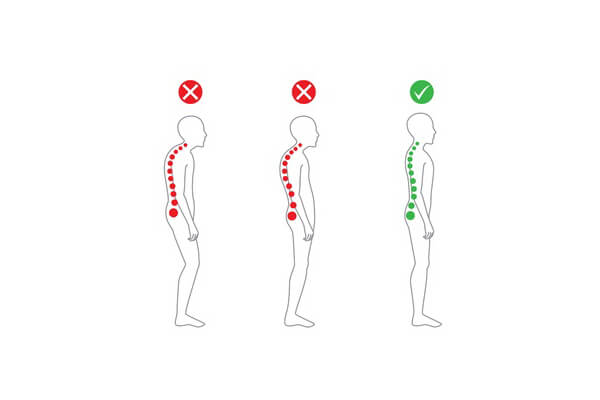
Sitting
- Keep the shoulders back but relaxed to avoid tension
- If looking at a computer screen, raise the screen to eye level
- Keep the knees a little lower than the hips
- Place feet flat on the floor
- Do not place arms on chair arms (misaligns the shoulders)
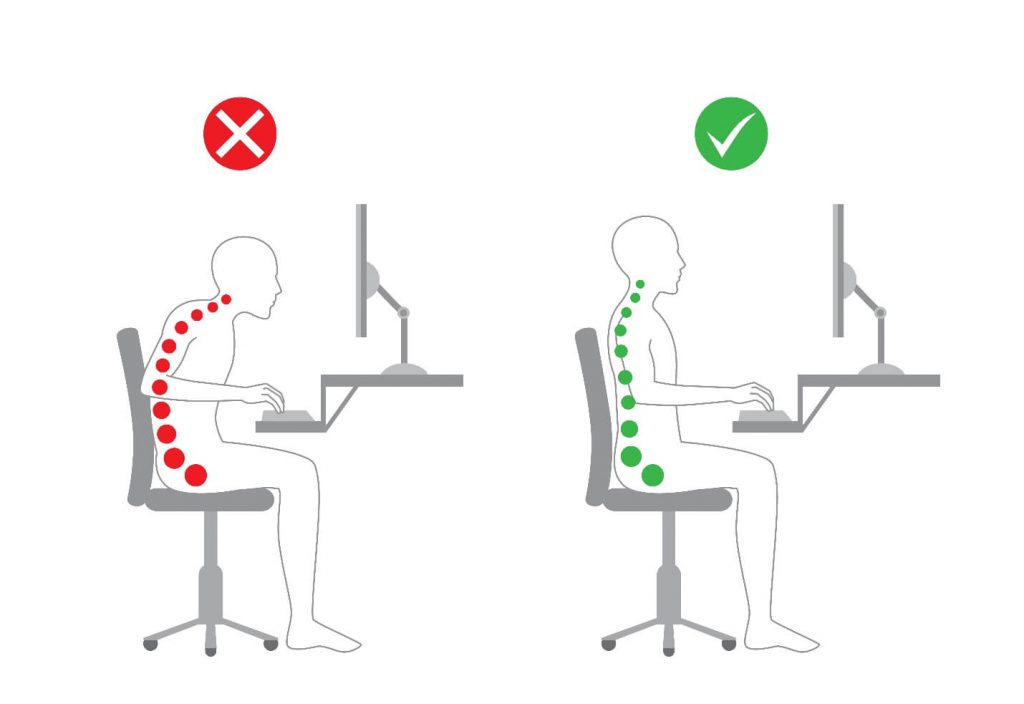
Walking
- Walk so the heel hits the ground first followed by the toe
- Keep the chin parallel to the ground
- Keep the back straight and not arched
- Keep the buttocks and stomach in line and not jutting forward or back
- Keep shoulders back and relaxed
- Do not look down (curves the neck); look forward at least several feet ahead
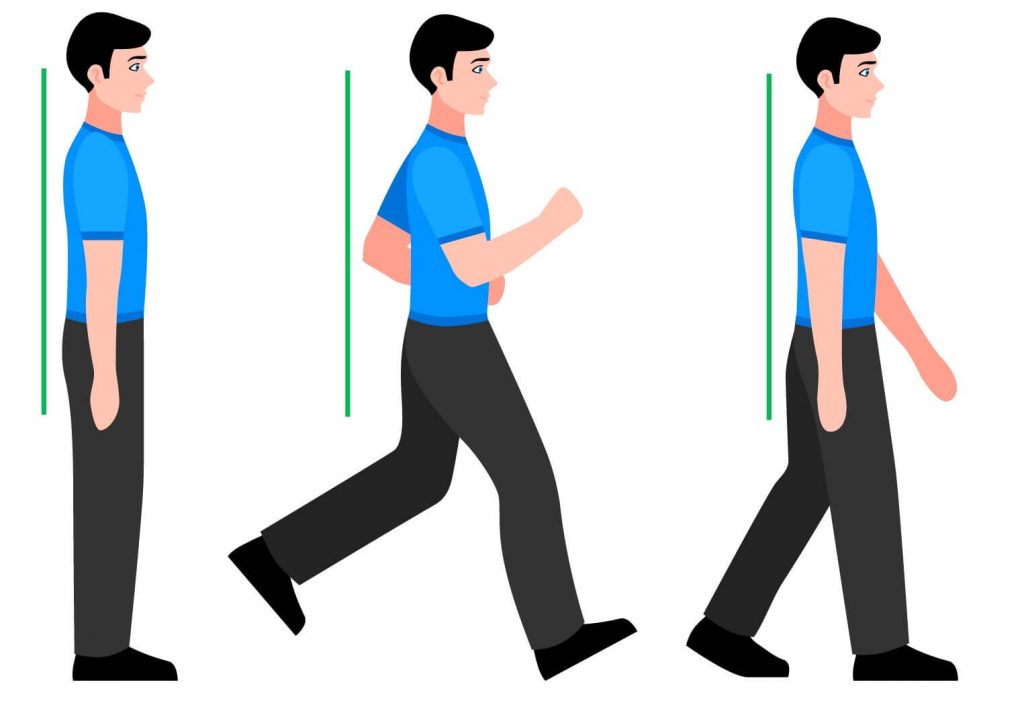
Sleeping
- Choose a comfortable position but take steps to maintain neck and spine alignment
- Choose a pillow that keeps the neck in alignment
- If sleeping on the back, place a small pillow or rolled up towel under the small of the back
- If sleeping on the side, place a pillow wherever necessary to keep the body aligned – between or under the knees, where the hips start, between the legs
- Do not sleep on the stomach (places a strain on the neck)
- Do not sleep with multiple pillows (forces the neck to bend)
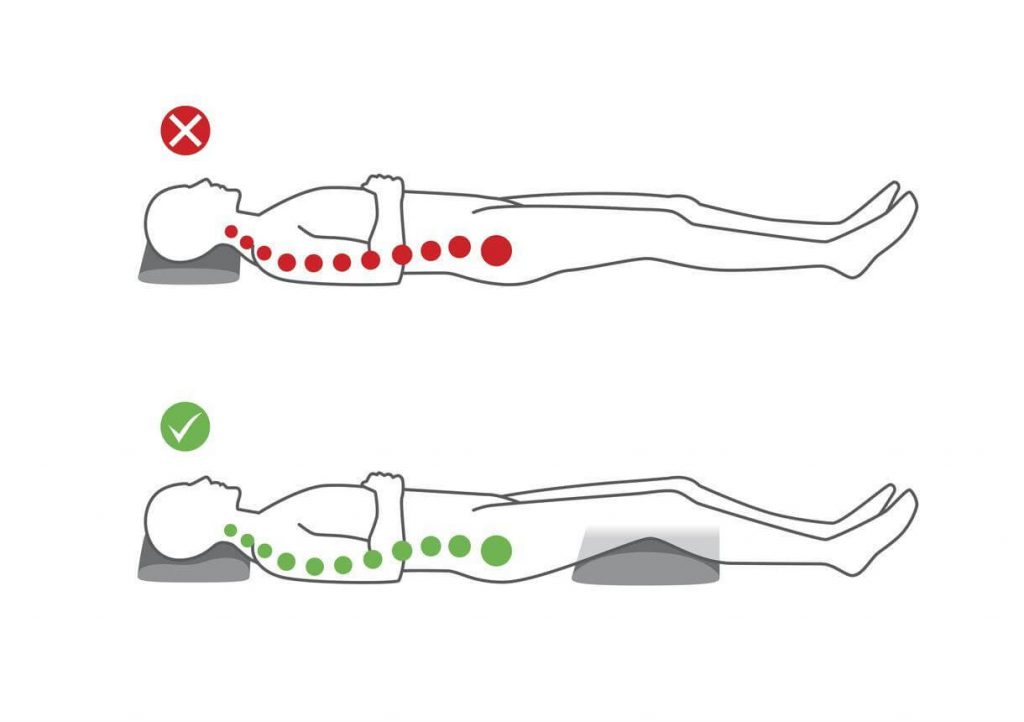
Taking Care of the Body with Good Posture
Poor posture is usually due to a bad habit and not paying attention, rather than a medical problem. Improving back posture is important to good health, and there are three main steps you can take.
- First, develop awareness of your posture during various activities, and make necessary corrections for spine straightening. Practice walking, standing and sitting with the correct spine posture.
- Second, lose weight if overweight or obese, and maintain a healthy weight. Carrying too much weight makes it difficult to maintain good posture.
- Third, exercise regularly to strengthen muscles, tendons and ligaments. These tissues play critical roles in skeletal alignment and movement. Strong core muscles can also assist with keeping the back straight because you are less likely to easily get tired muscles that lead to slouching.
Practice Makes Perfect
If back or neck pain persists, you should see a physician to make sure there is not a medical problem or injury, rather than a posture issue, causing the pain. People who have developed poor posture need to remember that it will take some practice to make good posture something that does not require special attention. With awareness and practice, good posture will soon come naturally, and you will feel and look better.
